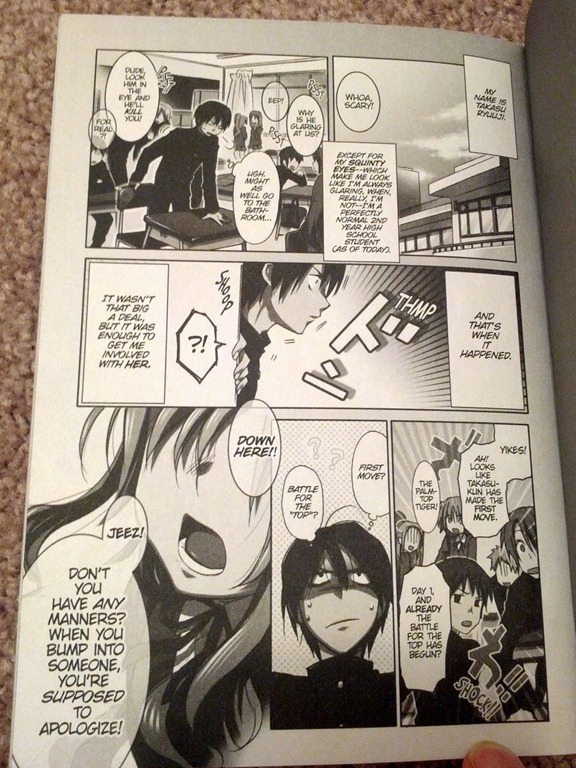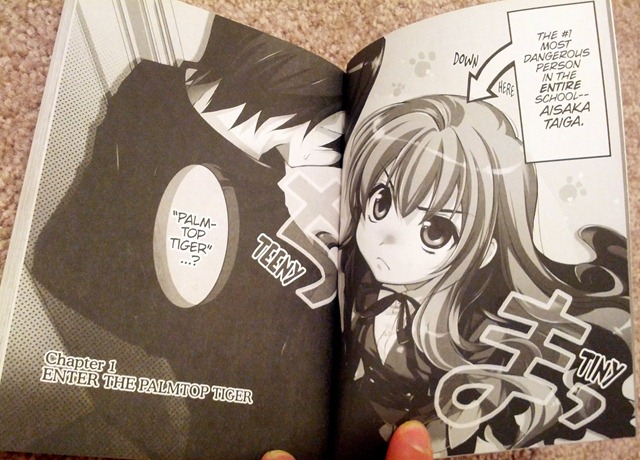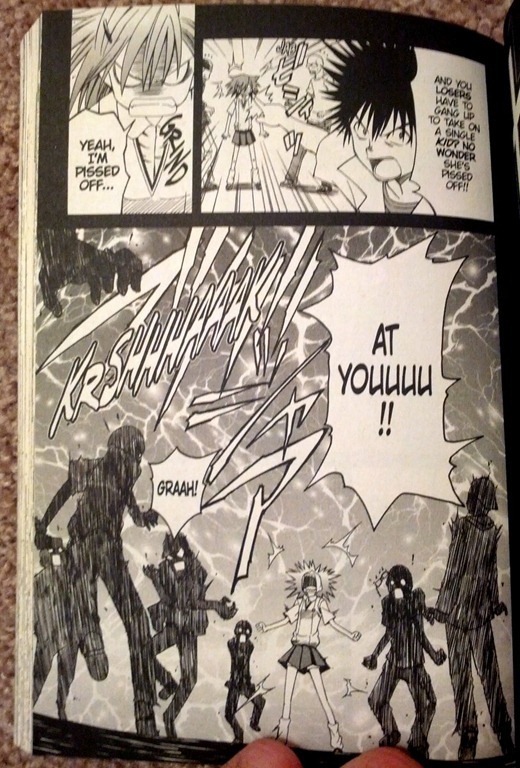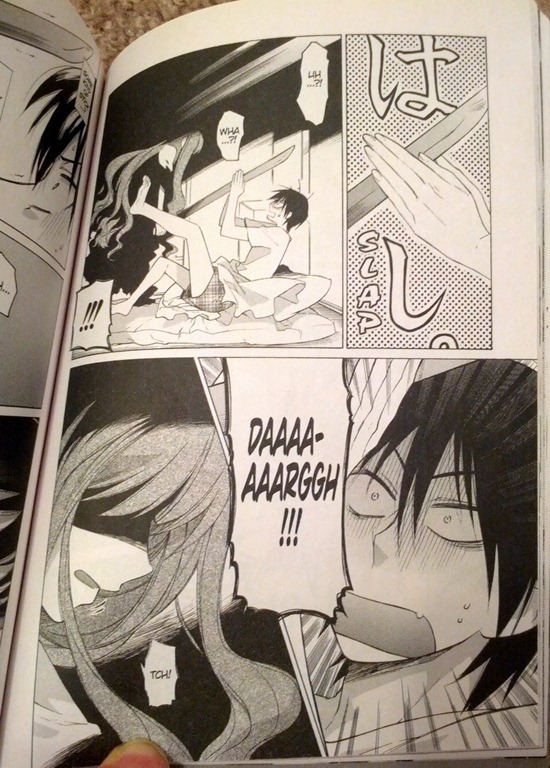Storytellers: Yuyuko Takemiya and Zekkyo
Publisher: Seven Sea Entertainment (American Publisher)
Year of Publication: 2008
Page Count: approximately 178 pages
What I learned about Writing/Storytelling:
1. Like many other manga, this starts out with an opening hook and then cuts back to start the story proper. Since this is a wacky romantic comedy, the hook is nothing more complex than “guy meets crazy girl.” Page 1 sets the scene: there’s a guy named Takasu, he doesn’t have friends at school because people are afraid of his squinty eyes. He’s on the way to the bathroom and bumps into a girl who everyone also considers dangerous:
Turn the page and we have a two page spread focusing on the girl, who is presumably supposed to be the reason people would want to read the book, as the guy is just a misunderstood everyman POV character:
Then we turn the page and the story jumps back to sometime earlier that day, as Takasu is getting up in the morning to go to school. We catch up to the opening scene somewhere around page 18 or so.
A lot of manga have an opening hook like this, and I take it to heart in my writing to the extent that I try to have some sort hook when I start a story, in case a reader is browsing the opening in order to decide whether or not to read on.
2. I’m not sure if I learned anything I didn’t already know, but:
The girl, Takasu, is a character type in Japanese comics called a tsundere. Basically a girl who’s tough or “harsh” on the outside but has a softer sentimental side to her. Wikipedia defines it as
“”Tsundere (ツンデレ?, pronounced [tsɯndeɽe]) is a Japanese character development process that describes a person who is initially cold and even hostile towards another person before gradually showing his or her warm side over time. The word is derived from the terms tsun tsun (ツンツン?), meaning to turn away in disgust, and dere dere (デレデレ?) meaning to become ‘lovey dovey’.“
There’s some neat characters that fit in this general character type, but the ones I enjoy tend to be characters in pulp genres. Toradora is just a romantic comedy and not so interesting.
In comparison, in a manga I like called “A Certain Scientific Railgun”, the main character acts like a Tsundere character when around a boy she likes, but she’s also a superhero with control of electricity:
I recall reading an argument online that a lot of superhero characters tend to have two contradictory character traits, and writers milk that for a lot of drama. Wolverine is feral but he’s also a meditative samurai, Bruce Banner is reserved and smart but also dumb and filled with rage. Spider-man and Superman are cool or uncool, depending on whether they are in costume. In the Iron-man movies, Tony Stark veers between responsibility and irresponsibility.
You can see a contradiction with the Tsundere character type, she’s tough but she’ll have a warm side and maybe secretly be in love with the guy she’s rough on. These girls are often supposed to look cute and harmless (Like Buffy The Vampire Slayer) but it turns out they are crazy tough or crazy powerful.
What I learned about art/storytelling:
Not a whole lot of takeaways, but here’s something. In the first page I included above, the reader doesn’t see who the guy bumps into, and he doesn’t either. So the camera angle implies his point of view. Same here: we don’t get a great look at who is attacking and he doesn’t either:
I guess the POV could be called in novel terms “third person limited”.
Recommendation: B-
Notes/Reviews/Synopsis:
This really felt like it only had enough ideas for a few chapters, not an ongoing series. Takasu meets the wacky Aisaka, she attacks him because he accidentally intercepted a love letter meant for a different boy and she’s embarrassed. They become friends, he tries to help her get the courage to talk to the boy she likes, but she’s too shy so hilarity or drama ensues. Basically, I wouldn’t bother coming back for volume 2.



